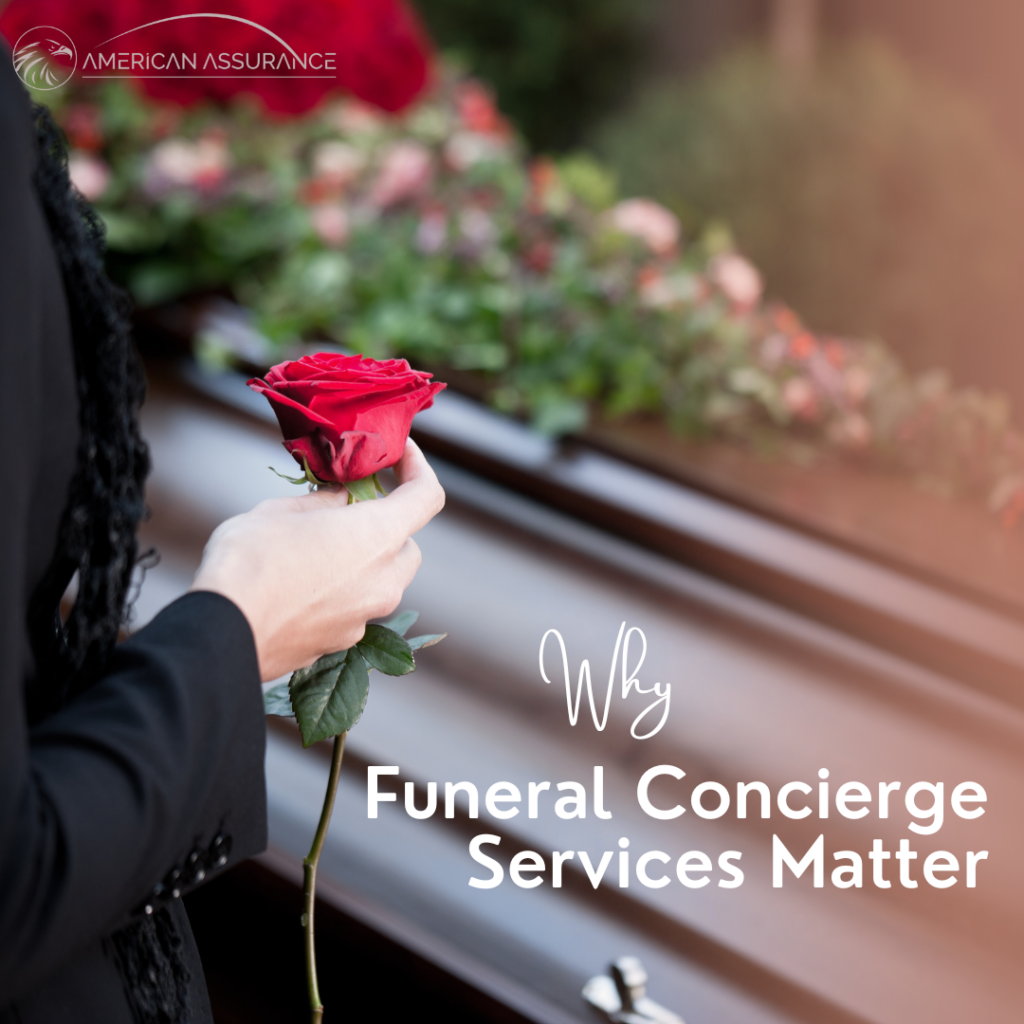
When we think about protecting our loved ones financially, we often focus on supporting them during our lifetime. But have you considered what financial burdens they might face after you’re gone? Final expense insurance is designed specifically to address this concern, providing peace of mind that your family won’t face financial strain during an already difficult time.
At American Assurance, our SerenityGuard program goes beyond standard coverage to provide comprehensive planning and support when families need it most. This guide explains everything you need to know about final expense insurance and how our exclusive SerenityGuard approach offers unique benefits you won’t find elsewhere.
What is Final Expense Insurance and How Does It Work?
Final expense insurance is a specialized type of whole life insurance policy designed to cover the costs associated with end-of-life expenses. Unlike traditional life insurance, which may focus on replacing income or paying off large debts like mortgages, final expense insurance specifically addresses funeral costs, medical bills, and other expenses that arise immediately after someone passes away.
Key characteristics of final expense insurance include:
- Smaller policy amounts: Typically ranging from $5,000 to $30,000
- Simplified underwriting: Often requires no medical exam
- Permanent coverage: Lasts for your entire lifetime as long as premiums are paid
- Fixed premiums: Monthly payments never increase
- Quick approval: Many applicants can be approved within days
Final expense insurance is particularly valuable for seniors aged 50-85 or those with health conditions who may not qualify for traditional life insurance policies or who find them too expensive.
Why Final Expense Insurance Matters: The Financial Reality of Funeral Costs
Many people don’t realize just how expensive end-of-life costs can be. According to the National Funeral Directors Association, the median cost of a funeral with viewing and burial has reached $9,135 – and that doesn’t include cemetery costs, monument/marker costs, flowers, or obituaries.
Cremation, while less expensive, still averages $6,645 with a viewing and ceremony. These costs have steadily increased over time, outpacing the rate of inflation.
Beyond funeral expenses, families often face:
- Unpaid medical bills
- Legal costs for settling the estate
- Outstanding debts
- Travel expenses for family members
- Lost income for family members taking time off to handle arrangements
Without proper planning, these costs can create significant financial strain at an already emotionally difficult time. Many families are forced to use credit cards, drain savings, or even set up crowdfunding campaigns to cover these unexpected expenses.
Introducing SerenityGuard: The American Assurance Difference
At American Assurance, we recognized that families need more than just financial coverage – they need comprehensive planning before and personalized support during a difficult time. That’s why we created SerenityGuard, our exclusive final expense program designed to provide an elevated experience that truly protects your family.
What Makes SerenityGuard Final Expense Insurance Different?
1. Personalized Final Wishes Planning Consultation
SerenityGuard begins with a personal consultation with an American Assurance advisor who helps you document your final wishes in detail. This goes far beyond what standard policies offer:
- We help you create a comprehensive end-of-life plan
- We document your specific burial or cremation preferences
- We record your desired service details, including location, music, readings, and special elements
- We help you plan memorial donation preferences
- We assist in drafting personal messages to loved ones
- We ensure all documentation is properly stored and accessible
This personalized planning process eliminates guesswork for your family and ensures your preferences are honored exactly as you envision them.
2. Expedited Claims Processing for Final Expenses
Unlike standard insurance providers that can take 4-6 weeks (or sometimes up to 6 months) to pay claims, SerenityGuard activates immediately when we receive notification of a policyholder’s passing. Our coordinated process ensures quick payment processing, usually within 24-48 hours of claim approval, so your family doesn’t have to worry about coming up with funds upfront.
3. Expert Funeral Cost Negotiation Services
One exclusive benefit of SerenityGuard is our team of expert negotiators who advocate for your family, helping them:
- Understand complex funeral pricing options
- Avoid unnecessary or marked-up expenses

- Compare pricing across multiple funeral homes
- Negotiate fair rates for services
- Ensure your documented wishes are honored
This service alone has saved families up to 45% on funeral expenses – meaning more of your policy benefit stays with your loved ones rather than going to the funeral home.
4. Ongoing Family Support and Guidance After Loss
When your family contacts us, they’re assigned a dedicated SerenityGuard representative who guides them through the entire process, from initial notification to final payment. This personalized support helps reduce stress during an already difficult time.
Our representatives help with:
- Immediate next steps following a passing
- Required documentation coordination
- Communication with funeral homes
- Guidance on death certificate acquisition
- Navigation of the claims process
- Ensuring all final wishes are properly implemented
The Industry’s Hidden Secret: Why Funeral Concierge Services Matter
What many people don’t realize is how marked up funeral costs can be – often 500-600% above actual costs. The U.S. funeral industry exceeds $20 billion annually, with directors typically earning a 30% commission on services.
When your family first enters a funeral home, one of the first questions they’ll face is “Did your loved one have insurance?” This seemingly innocent question often leads to the funeral home suggesting they’ll “handle everything” if your policy is assigned directly to them.
What happens next? The costs mysteriously increase to match whatever insurance amount is available. This is precisely why SerenityGuard includes our negotiation service – to protect your family from these predatory practices and ensure the money goes to your beneficiaries, not excessive funeral profits.
Who Needs Final Expense Insurance with Funeral Planning Services?

How SerenityGuard Final Expense Coverage Works: A Simple Process
Applying for Final Expense Coverage
- Initial Consultation: We start with a conversation about your specific needs and wishes.
- Simple Application: Our application focuses on basic health questions rather than invasive medical exams.
- Quick Approval: Many applicants receive approval within days.
- Policy Issuance: Once approved, your policy is issued, and coverage begins immediately.
- Planning Session: We schedule a detailed planning session to document your final wishes.
When the Time Comes: The SerenityGuard Process
- One Call Activation: Your family makes a single call to activate the SerenityGuard benefits.
- Immediate Support: Our team connects with the funeral home and begins the claims process.
- Expert Negotiation: Our specialists work to ensure fair pricing and adherence to your wishes.
- Prompt Payment: Benefits are paid quickly, typically within 24-48 hours of claim approval.
- Continued Support: We stay with your family through the entire process, providing guidance and assistance.
Types of Final Expense Coverage Available Through SerenityGuard
SerenityGuard offers several coverage options to meet different needs:
Level Benefit Plan
- Immediate coverage with no waiting period
- Available for those in better health
- Full death benefit from day one
- Optional double coverage for accidental death
Modified Benefit Plan
- Available for those with certain health conditions
- Return of premiums plus 10% interest if death occurs in the first two years
- Full coverage for accidental death from day one
- Full benefit after the initial two-year period
Both plans include all the benefits of the SerenityGuard program, ensuring your family receives comprehensive support regardless of which coverage option you qualify for.
Why Families Choose SerenityGuard Final Expense Insurance: Real Impact
The true value of SerenityGuard becomes apparent when families need it most. Consider this example:
When John passed away unexpectedly, his daughter Sarah was overwhelmed with grief and uncertainty about next steps. With her father’s $10,000 SerenityGuard policy, Sarah made one call and was immediately connected with a representative who guided her through the process.
The SerenityGuard negotiation team worked with the funeral home, reducing costs from $9,200 to $5,800. Not only did Sarah not have to pay anything out of pocket, but she also received the remaining $4,200 to help with other expenses. More importantly, she had John’s detailed wishes already documented, eliminating guesswork during her time of grief.
This level of support is what distinguishes SerenityGuard from standard final expense policies that simply provide a check without guidance.
Final Expense Insurance Cost vs. Value: Understanding the Investment

The monthly premium for your SerenityGuard policy depends on several factors:
- Your age when you apply
- Your health status
- The coverage amount you select
- The type of plan you qualify for
While it’s possible to find cheaper final expense policies elsewhere, it’s important to consider the value of the additional services included with SerenityGuard. Our exclusive planning consultation and negotiation services alone can save your family thousands of dollars, effectively increasing the value of your policy beyond the face amount.
Many of our policyholders find comfort in knowing they’re paying just a few dollars per day for complete peace of mind. With SerenityGuard, you’re not just buying an insurance policy – you’re investing in comprehensive planning and support for your loved ones.
Taking the Next Step: Securing Your Family’s Peace of Mind with Final Expense Insurance
Planning for end-of-life expenses isn’t always comfortable, but it’s an important way to show love for your family. By addressing these needs now, you’re ensuring that your loved ones can focus on supporting each other and honoring your memory rather than worrying about financial concerns.
At American Assurance, we’re committed to making this process simple and straightforward. Our licensed agents specialize in final expense coverage and can answer all your questions about SerenityGuard. We’ll take the time to understand your specific situation and help you find the right coverage to meet your needs and budget.
Ready to learn more about SerenityGuard and how it can protect your family? Contact American Assurance today for a free, no-obligation consultation. Our team is ready to help you create a plan that gives both you and your loved ones peace of mind.
American Assurance brings together industry veterans with over two decades of experience and partners with carriers that have been protecting families for more than a century. Since our founding in 2016, we’ve been dedicated to providing final expense insurance and funeral protection to families nationwide. We specialize in working with seniors who are living on a fixed income, offering customized programs that meet your specific needs and budget while delivering the stability and security that comes from our established industry partnerships.

